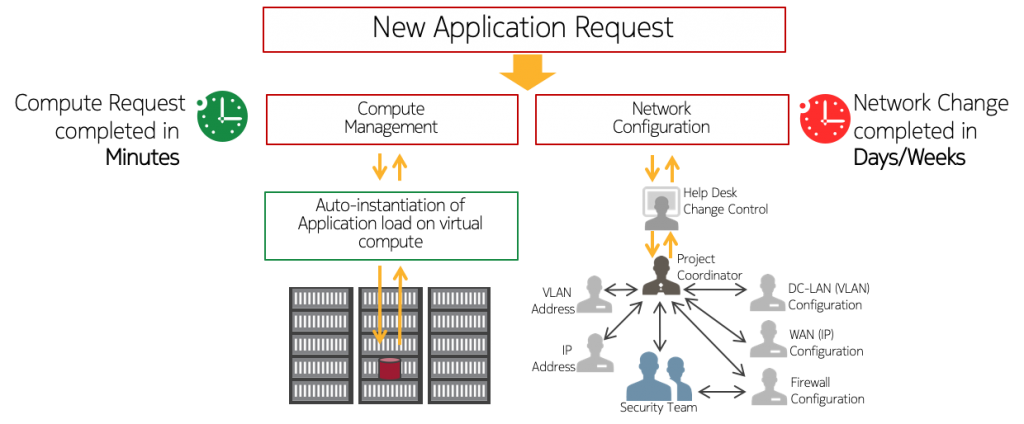I’ve been working on software defined networking for the branch since 2013, that’s before it was called SD-WAN and before the industry knew what the real benefits of an SDN powered wide area network would deliver to Enterprises. This four-part blog will cover the key changes over the last six or so years of evolution of SDN in the WAN to SD-WAN.
The market positioning of the technology has changed over the years, from an initial message of how SD-WAN would allow the Enterprise to “un-carrier” their network and run the WAN purely over the top of the Internet, to the use of SD-WAN as a complementary technology where Internet could be augmented with existing branch MPLS circuits and an application based decision could be made on which traffic would use MPLS and which would use the Internet.
With these transitions in marketing and positioning the main message was that SD-WAN would lower the cost of branch connectivity. That’s a strong message and one that most Enterprises would widely gravitate to; who doesn’t want more bandwidth for less?
However, cost savings are only part of the benefit of transitioning your Enterprise network to SD-WAN and to grasp the holistic benefits you need to understand the reasoning behind the creation of Software-Defined Networking (SDN).
SDN had emerged around 2011 as a thesis on virtualized networking that was programmed from the application down, not the network layer up, as had been the norm for the previous 30 years of Enterprise networks.
This thinking was a natural progression of the shift in consumption with virtual machine (VM)-based compute that had begun 10 (or so) years earlier in the data center and had gained mainstream acceptance across most Enterprises.
The need for SDN arose from the simple question; if I can spin up a VM and deploy an application in a matter of minutes why does it take days or even weeks to program the network to give my employees access to the new application?

The initial use case for SDN was in the data center, where virtual network connections could be automatically created with the deployment of new IT application loads. Instantly the problem of manually programming the data center network was removed. Great, so problem solved right? Well not quite.
Enterprises run multiple network islands across their business, and for most this includes multiple teams. One team focused on the internal networks of the Data Center and another focused on the wide area network to the branch. To complicate the interworking of these islands, a third team of specialist security and firewall experts may exist who would need to open (or close) the paths between the data center and the WAN on an application or employee group basis.
These disjointed networking islands led to the second use case for SDN on the wide area network, that we know today as SD-WAN.
SD-WAN, the early years
With the first incarnations of SD-WAN the driver was to automate the connections between physical branches and the applications. This was based on removing complexity and increasing responsiveness:
Zero Touch Provisioning – was about simplifying the installation at the branch. This was based around the broadband deployments we have at home; where the ISP couriers out the residential gateway to us the consumers. We open the courier pack, plug the gateway in, and magic we are connected to the Internet.
Surely if it’s that easy for home internet we can do the same for business branch setup and that’s what zero-touch-provisioning (or ZTP) in SD-WAN gives us, albeit with an extra level of security and validation so that the Enterprise WAN can’t be compromised.
Separation of the connectivity from the WAN – This is where the SDN concept of network virtualization comes to the front; the ability to pick and choose any available IP transport (MPLS, Internet, dark fiber, 4G) at the branch (we call this the underlay) and to build the wide area network over this with SD-WAN (this is the overlay).
Self-service – revolves around moving the management functions of the wide area network from complex command-line interfaces to customer friendly web portals where both visibility and control of the WAN is provided to the Enterprise customer.
These were all positive improvements to the way WANs had been delivered to and managed by Enterprises. This new technology put Enterprise networking teams at the forefront of management of all aspects of their network including;
- Deployment of new branches or relocations of existing branches
- Freedom to choose from multiple connectivity providers on a location by location basis
- On-demand moves, adds, changes and deletions within the WAN service
- Increased visibility of the applications running across the network
On face value these improvements could significantly change the operating environment of the WAN for the Enterprise, but this came with some hidden costs.
In part two of this blog I’ll cover the complexities of the early SD-WAN implementations, in particular the operation of the SD-WAN platform. Part 2 of the blog series can be found here.

